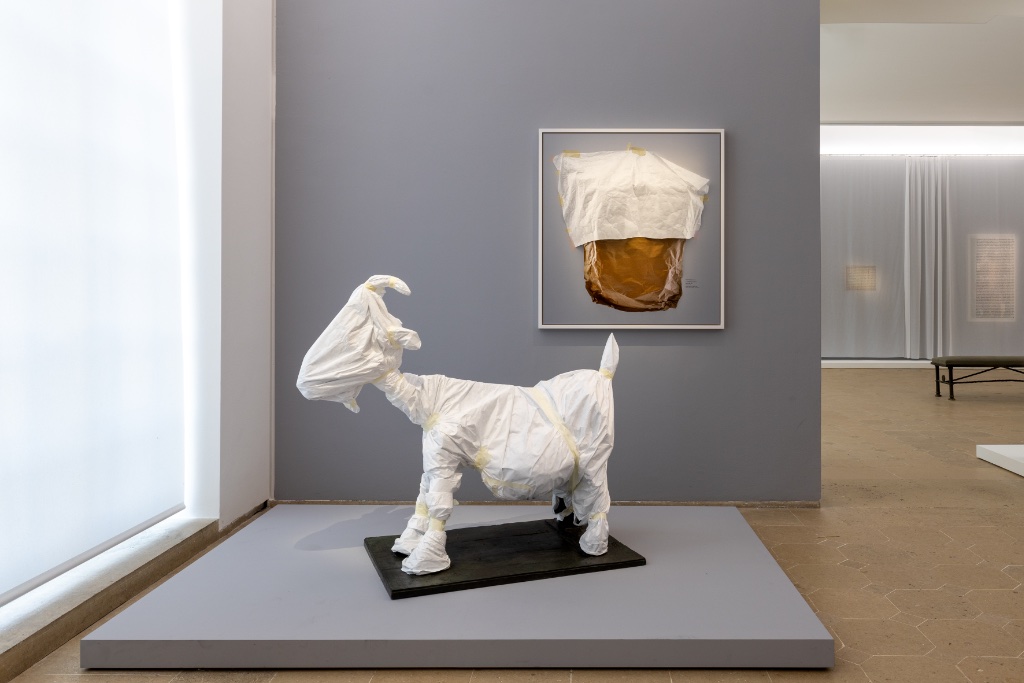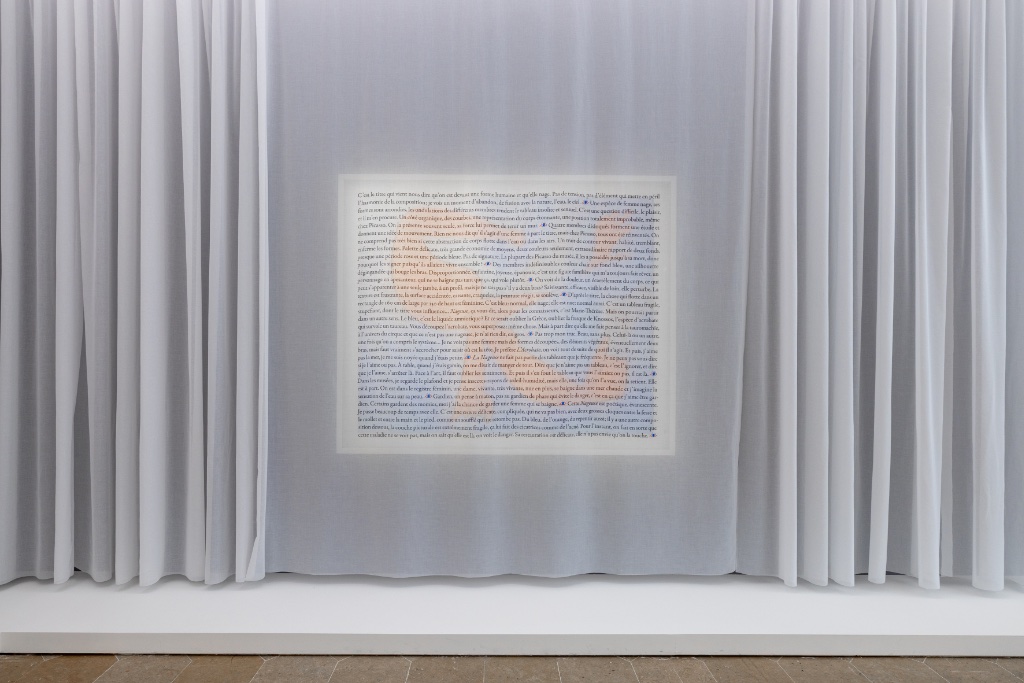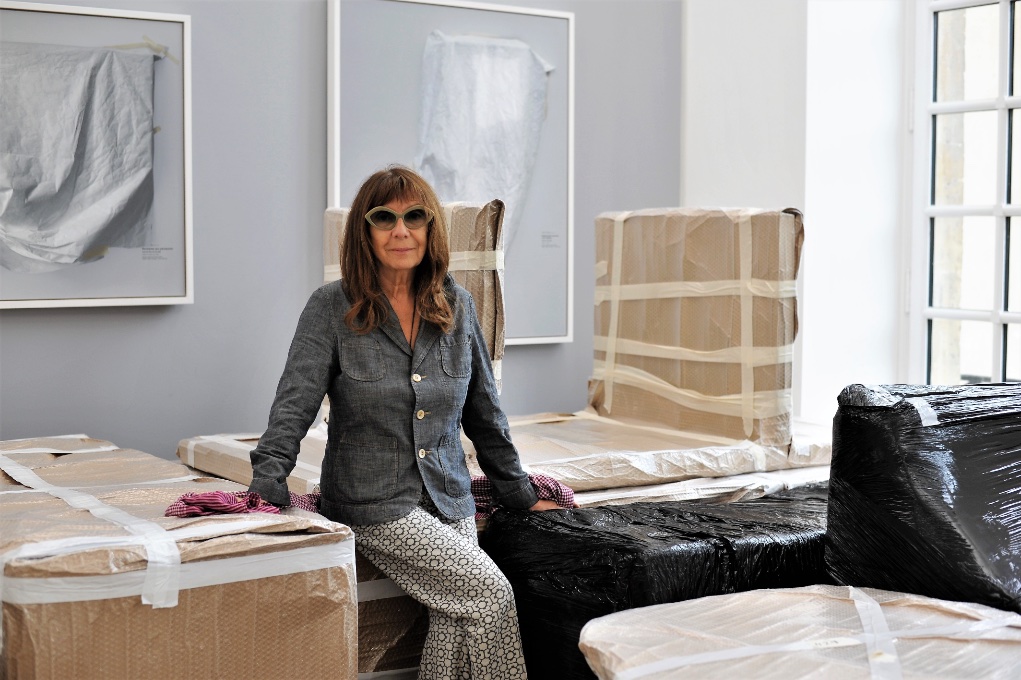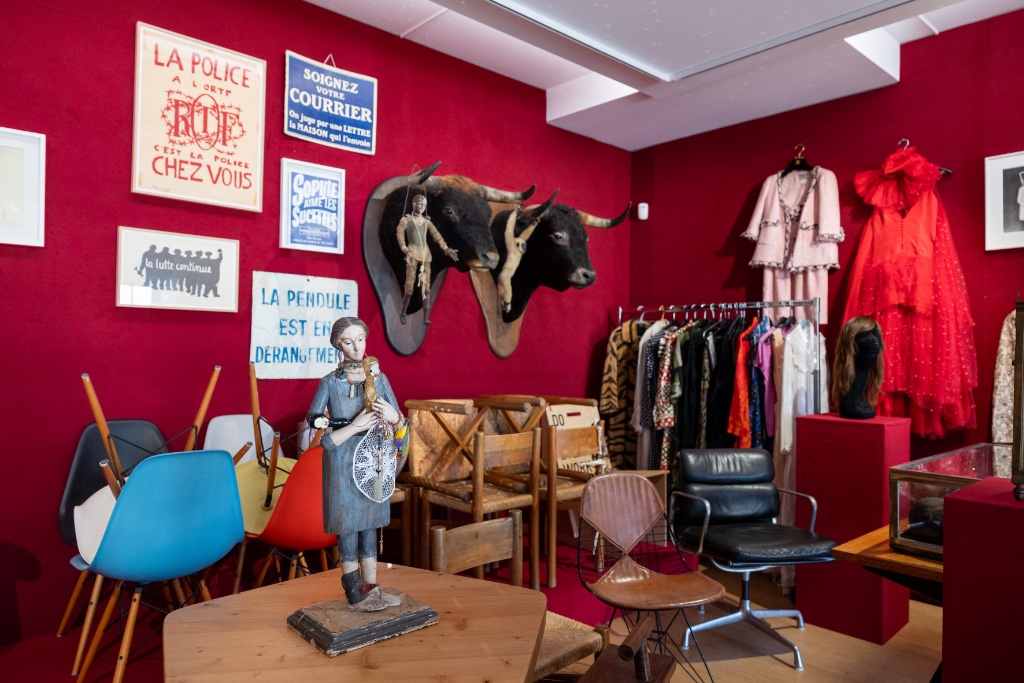
Sophie Calle has invaded and taken over the entire Picasso Museum in Paris for the exhibition “À Toi de Faire, Ma Mignonne,” part of an ongoing tribute to the master on the 50th anniversary of his death. Visitors can still see some works by Pablo in the museum devoted to him, cleverly filtered through Calle’s eyes, but her vision dominates.
There are actually several exhibitions here, all of them self-referential, as is Calle’s wont. On the ground floor, in “Picalso” (she even inserts part of her name into Picasso’s), she offers a record of her visits to the museum in preparation for this show, taking an oblique look at his work through her photos of his paintings when they were covered with paper and tape during lockdown, for example. When some of the paintings were out on loan to other museums on another visit, she asked the museum guards to describe the absent works to her. The transcriptions of their recollections were laid over the paintings in question, veiling without entirely obscuring them.

Inspired by a quote from Jean Cocteau – “Picasso often says that painting is a blind man’s job. He paints not what he sees, but what he feels about it, what he tells himself about what he has seen” – Calle then segues into several projects involving blind people’s verbal descriptions of things once seen or imagined, another way of describing things that aren’t there.
Upstairs, she presents installations on the respective deaths of her mother and father, which also act as portraits of them. Then, as if the examination of their mortality had called to mind thoughts of her own, Calle wonders what will happen to her belongings when she dies since she has no children to pass them on to. These thoughts lead to what I consider the exhibition’s pièce de résistance: an inventory of all her possessions.

After asking auctioneers from the Hôtel Drouot to go to her home and inventory all of her possessions (excluding household appliances, bedding, paperwork, most of her own artworks and “the jewelry I want to wear after I’m dead”), she had a film made of them going through the house and painfully attempting to describe such objects as “a composition of two early-20th-century Neapolitan or Spanish sculptures of saints, one holding a 2005 letter to Sophie Calle from the French Ministry of Finance.”
The film is fascinating and funny. Calle had told the auctioneers not to put a monetary value on the objects and to ignore her presence while she silently watches them conducting the inventory, which leads to amusing incidents: in one scene, for example, they open a door and find her sitting in a bathtub (fully clothed).

Visitors then pass into the exhibition’s next room, filled with all of the 500 or so objects they have just seen in the film, from a taxidermied giraffe’s head and neck to a collection of stones, her books and clothes, furniture, kitschy memorabilia, works by other artists and more. The auction catalog is also on display. The question that then arises is: what will happen to all these things when the exhibition is over? Will she really auction them off or have them moved back into her house?
You may be able to ask the artist in person. Calle wanted to set up a bedroom for herself in the museum, but since that proved impractical, she created an office. A sign on the door invites visitors to knock: she might be present. Or she might be wandering around through the exhibition, as some visitors have reported.
Visitors haven’t yet seen the whole show, however. In the next part, her passion for inventories then leads the 70-year-old Calle to present all of her completed projects (61 of them) in the form of crime novels, followed by all of her unfinished projects, together with descriptions of them and explanations for their incompleteness. By the time they arrive at this part of the show, only diehard Calle fans will have the stamina to carefully examine all of this information, interesting as it is.
The latter half of the show more or less leaves Picasso behind, aside from a few quotes. The inescapable impression is that rather than celebrating the anniversary of Picasso’s death, Calle is preparing for her own, without ever losing her wry sense of humor.
See our list of Current & Upcoming Exhibitions to find out what else is happening in the Paris art world.
Favorite